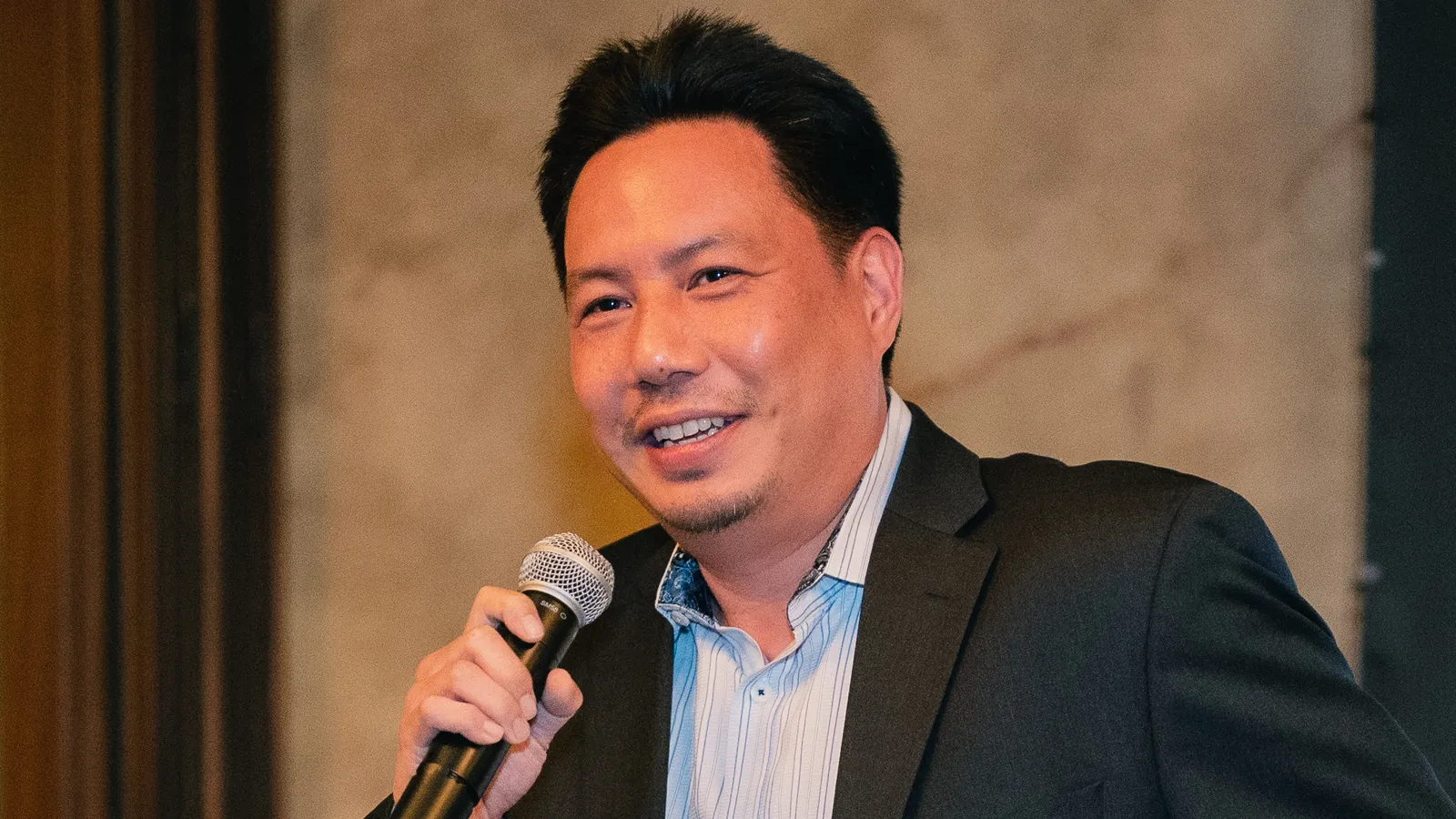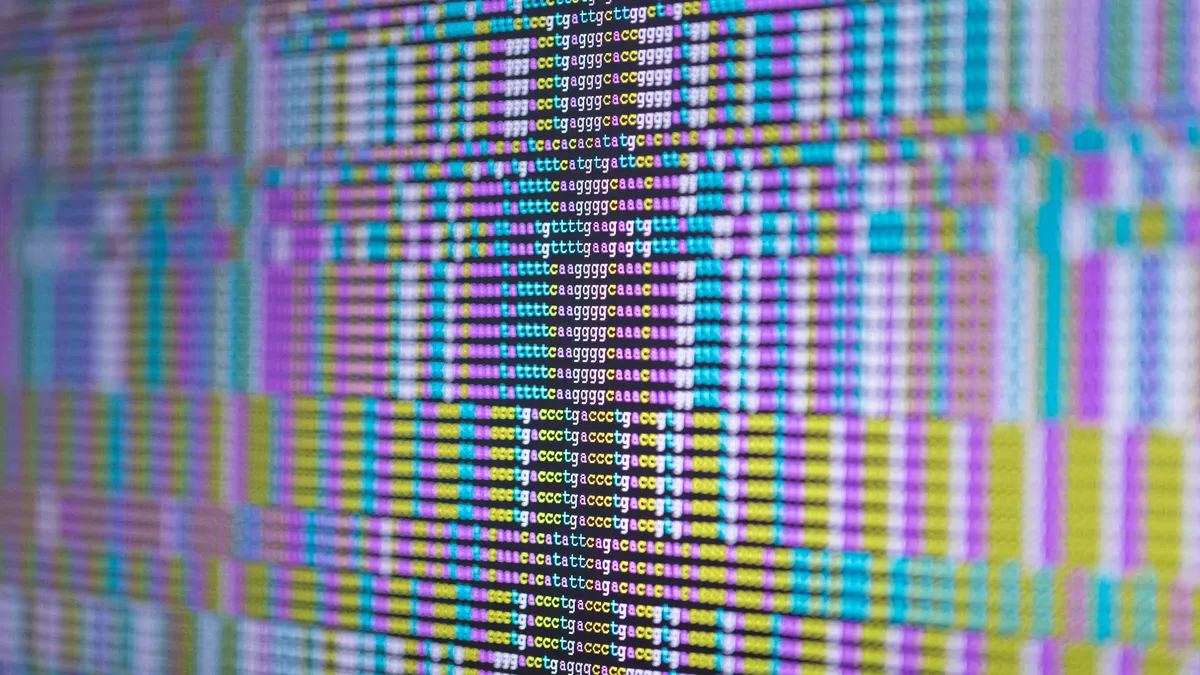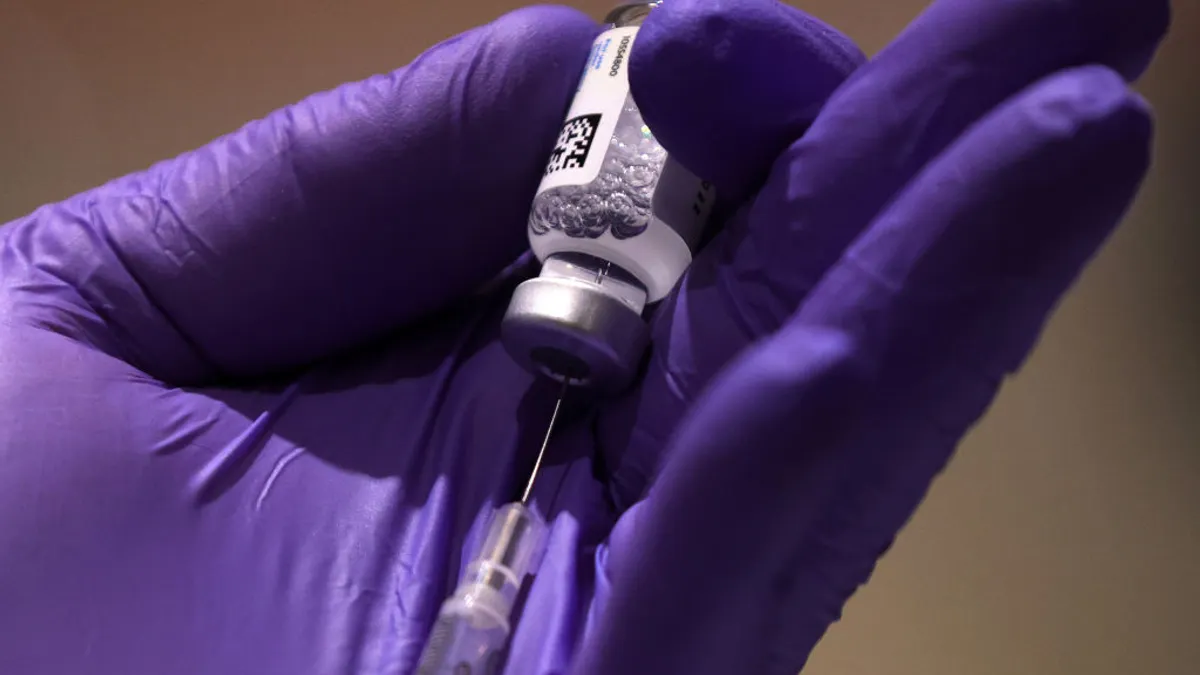Spatial genomics could be the next step in the evolution of scientific breakthroughs. The gene analysis method is almost a “unifying theory,” said Terry Lo, CEO of Cambridge, Mass.-based Vizgen — the combination of microscopy, genomics and sequencing provides a “new capability to understand the underlying biology” of a disease in a way that’s never been available before. In other words, it allows for greater understanding of a cell’s genomic properties within the context of biology.
“Spatial genomics is a subset of the larger field of spatial biology, which in its simplest form is the convergence of molecular detection alongside imaging and microscopy,” Lo said. “Now, with spatial genomics we can identify different types of cells, the genes they are expressing, where they’re located and potentially how they are interacting with each other. We call this cell mapping.”
Lo explained that these reference materials or “atlases” can contain as many as 5 terabytes of data generated from one tissue section.
“We can image up to hundreds of thousands of cells in one tissue section and then detect the expression of up to 500 genes and identify the specific location of those RNA coming from those 500 genes which could be a billion RNA molecules in that small section of tissue,” he said. “I think one of the exciting parts of this technology is that it is so new that even the capabilities around how to analyze the data and what to look for in the data are still emerging. This is really, at least commercially, the first time researchers are getting access to this kind of data. There’s a lot of work being done to interpret and analyze this whole gold mine of data.”
Vizgen is just one of a handful of companies operating in spatial genomics, and Lo claims the company is the first to offer a commercially available platform using the technology. Called Merscope, the platform stems from the Merfish technology developed at Harvard and was licensed by Vizgen.

Lo, who first got involved in what is now spatial genomics while at Perkin Elmer, discusses how the field has evolved and why neurodegenerative diseases are ripe for the technology.
This interview has been edited for brevity and style.
PHARMAVOICE: How did you get involved with spatial genomics?
TERRY LO: About seven years ago, I ran the tissue business at PerkinElmer, and we had the first successful commercial platform to look at high-plex proteins. In those days, there were just seven targets. It sounds very modest by today’s standards but in the early days that was a big deal. We started to focus on those applications, particularly in immuno-oncology, and we decided to spin out the business from PerkinElmer to build on this and be able to create this market in spatial (genomics).
My business unit was merged with another startup called Akoya Biosciences, where I was president for two years building and scaling up that company. Shortly after I left to join Vizgen, Akoya went public and became the first pure spatial company to IPO. But what was really exciting for me coming to Vizgen, was the fact that this market on the genomics side was completely untapped. There has never been a technology for the genomics field until our Merscope platform was launched. This was just such a huge, huge opportunity. It’s really been playing out how we thought it would, from that perspective.
You’re sitting in a CEO role and basically creating a new market. Do you feel extra pressure?
I think this is the most exciting place to be, where you have this opportunity to create and to build something that hasn’t been done before. Across the company we look at this as an opportunity to make history in the field of sciences and hopefully to benefit the life sciences. I think we all feel this is incredibly groundbreaking, what’s happening right now, and from a historical context, I think we are at an incredible inflection point of where the science is going.
"It’s like spatial has become a tagline. It’s almost like the dot-com tagline where every life science company wants to somehow have spatial associated with their name."

Terry Lo
CEO, Vizgen
While it’s still early, I’m hoping there’s more to write about over the next 10 years. I’ve been very fortunate to be part of what’s been happening in this space and getting to work with great science and great scientists and team members along the way. It’s really been a very fortuitous journey for me. I feel very lucky to be part of all of it.
Where do you see the greatest and most immediate potential for spatial genomics technology?
I think probably one of the most obvious ones is around some of the neurodegenerative diseases, for example Alzheimer’s. There was a report that stated the U.S. cost burden for Alzheimer’s by 2050 is going to be $1 trillion per year. There’s obviously a pressing need here for us to find solutions that can address diseases like this.
As we’ve seen, the drug development process has not been the best to address these types of diseases. It’s been very, very difficult to find drugs that are really effective in this space. There are currently big initiatives that are ongoing to first map the brain and create these atlases of the brain so that we can start to have a reference point to look downstream at where potentially some of the disease mechanisms start to come into play. This is the discovery part of understanding the disease mechanism and the drivers that hopefully we can then start to target from a drug development perspective.
Just to be clear, that is a very forward-looking application, but it is the basis for the type of research that is being done. The cell ‘atlasing’ projects are very much like the human genome project with the capability of sequencing. We thought it was a great idea to sequence the human genome and that was really the start of building out different capabilities and applications once we were able to use that gene sequence information. I think it’s a very similar analogy to what’s happening right now on the spatial side.
What’s next in terms of applying the technology?
Spatial biology started with predictive biomarkers on the protein side. I think this is going to be directly applicable to spatial genomics. We’re just starting to see now how we can apply some of this information to become a predictive biomarker to understand what types of drugs or which drugs are going to be effective for a certain patient. We’ve already certainly seen proof of this on the protein side for immuno-oncology and I think we have the opportunity now on the genomics side to potentially do it even more precisely or at least be complementary to that as well.
What’s been the reaction from the industry and investors?
The demand from the research market has been absolutely tremendous. It’s one of the reasons this has become such a hot field, not just from the customer side but also from investors and from companies trying to get into this space. It’s like spatial has become a tagline. It’s almost like the dot-com tagline where every life science company wants to somehow have spatial associated with their name.
Because this type of data is so new, it is being used more in the discovery research side in the academic research field. But we have quite a few pharma companies interested as well. Every pharma company now is quite familiar with spatial biology, and they are deciding what would work best in terms of integrating spatial genomics into their programs. I think we’re going to see a lot of traction in the pharma space as well.




















